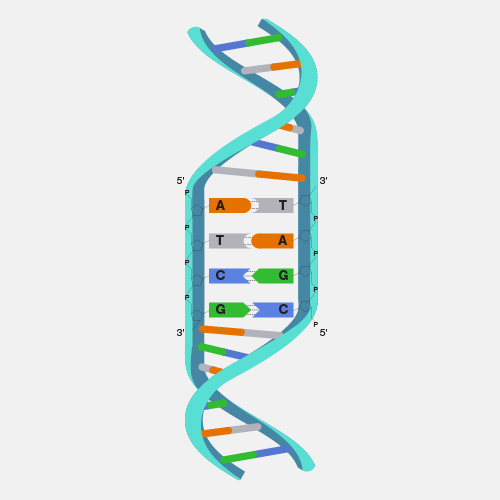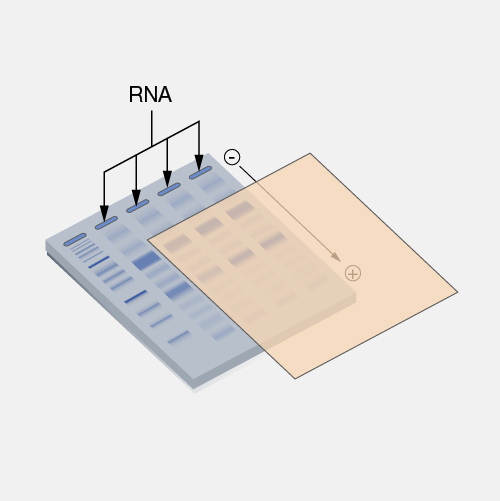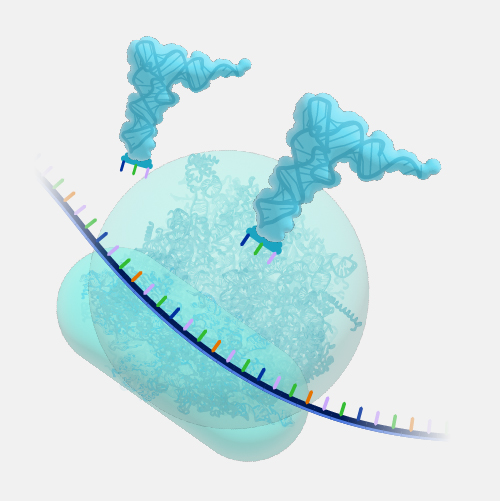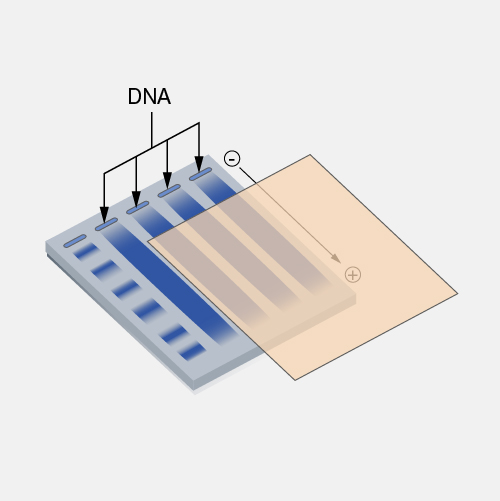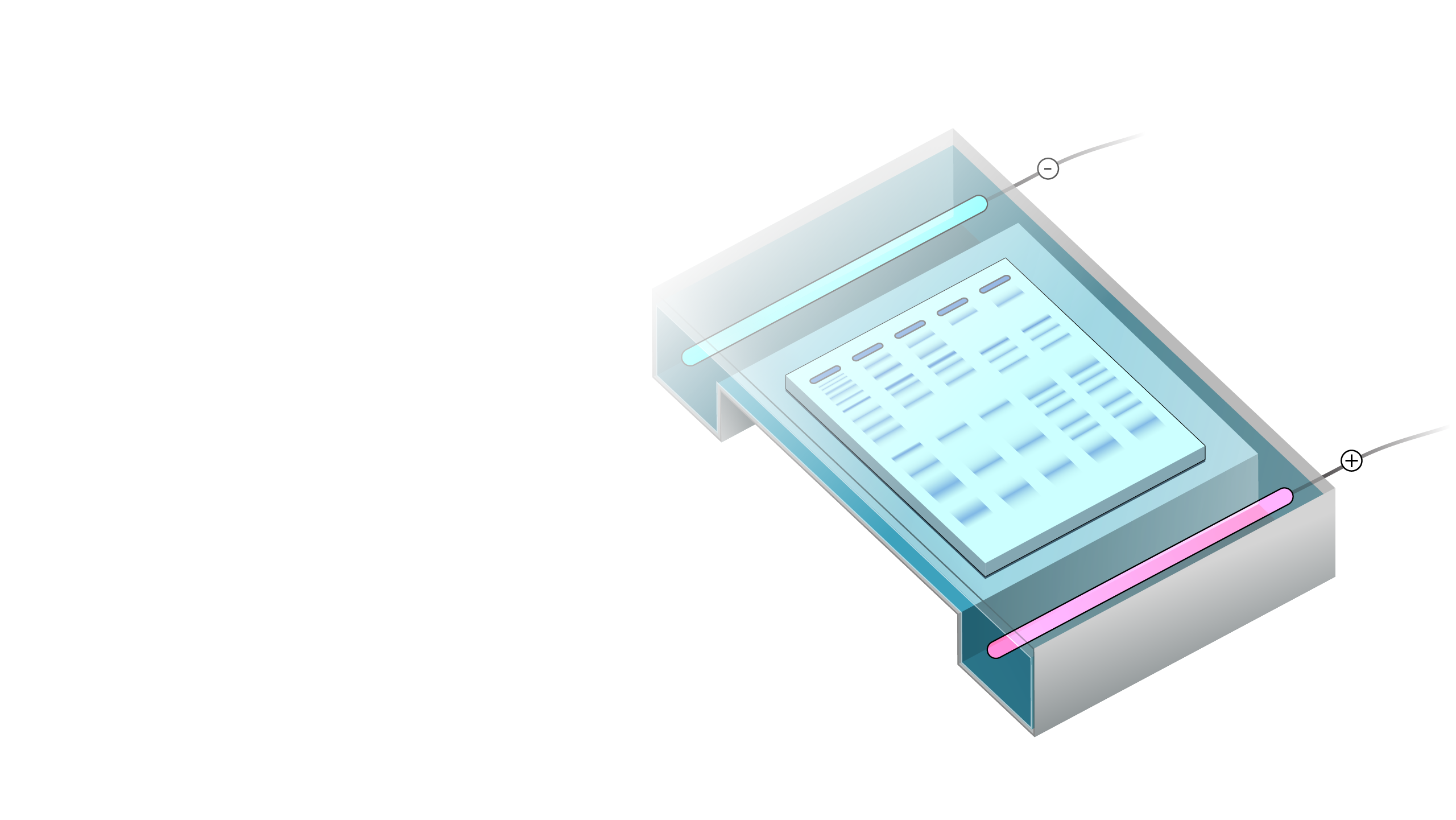
Electrophoresis
Definition
Electrophoresis is a laboratory technique used to separate DNA, RNA or protein molecules based on their size and electrical charge. An electric current is used to move the molecules through a gel or other matrix. Pores in the gel or matrix work like a sieve, allowing smaller molecules to move faster than larger molecules. To determine the size of the molecules in a sample, standards of known sizes are separated on the same gel and then compared to the sample.
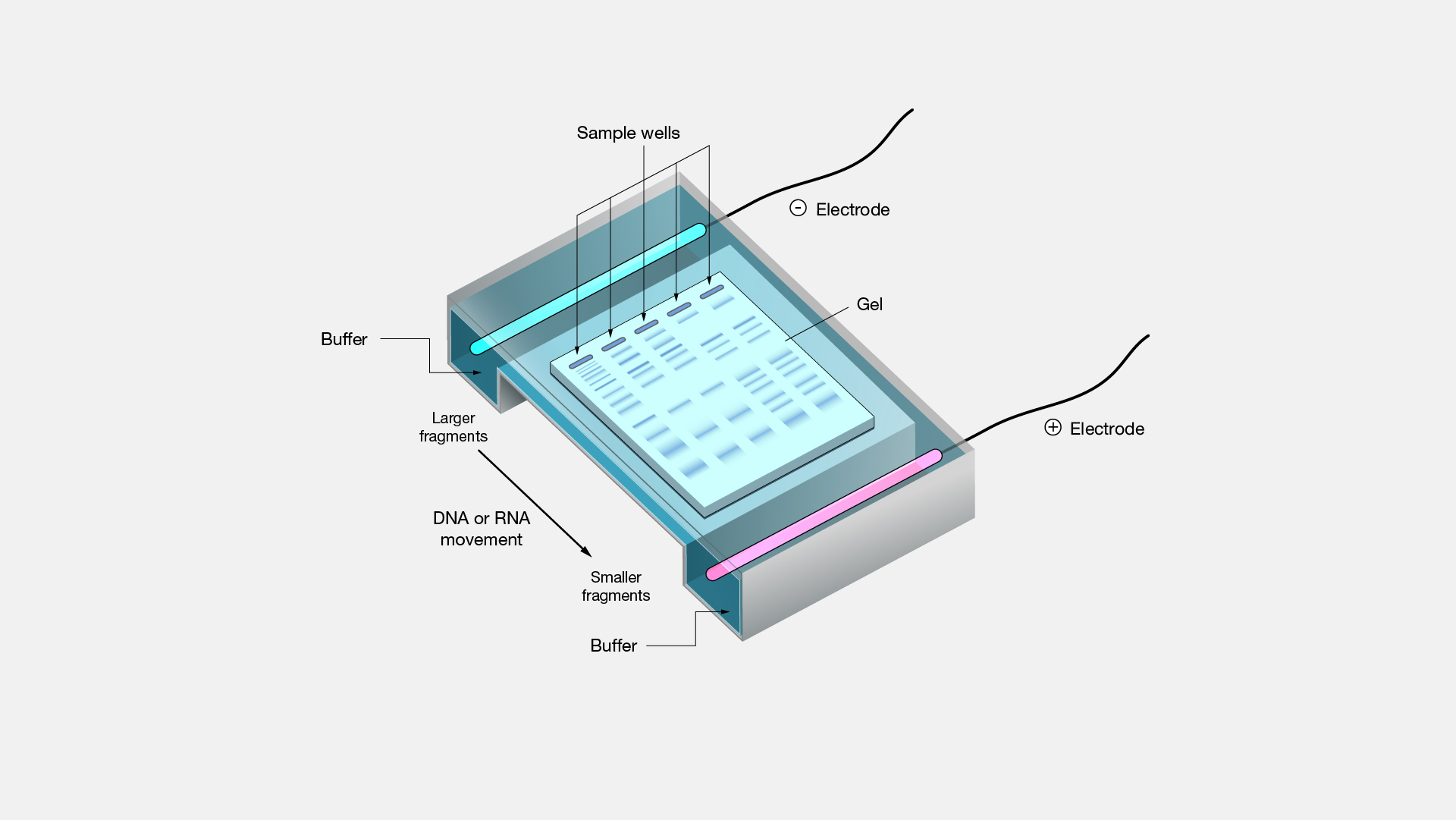
Narration
Electrophoresis. I worked in my dad's lab in late high school in college where we use starched electrophoresis to study population genetics. I remember first learning of and then carefully reading the paper where Linnaeus Pauling and colleagues reported using the new technology of electrophoresis in 1946, to show that sickle cell hemoglobin carries more positive charges than the normal version on its surface. Today, electrophoresis is used for so much more across biology and medicine.

